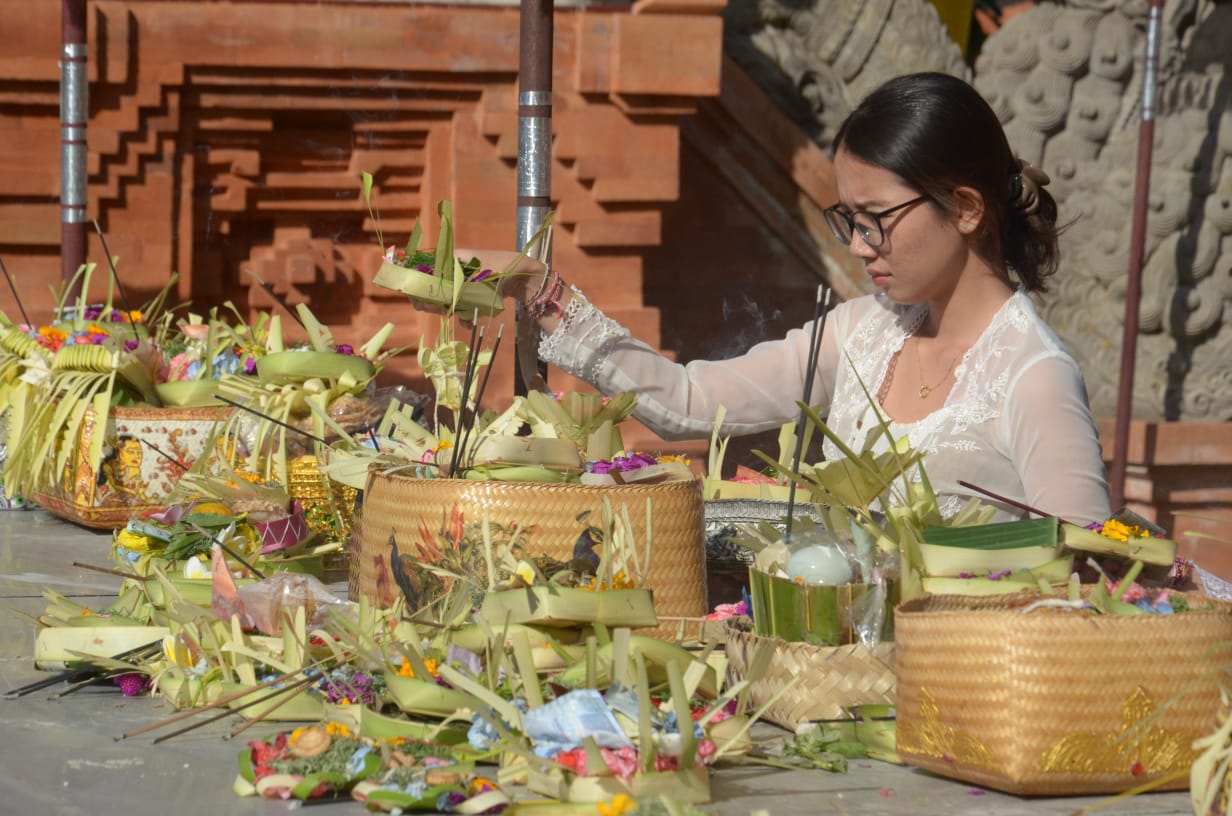Every 210 days, a quiet transformation sweeps across the island of Bali. Streets become adorned with towering, arching penjor—elaborate bamboo poles decorated with coconut leaves, flowers, and rice offerings.
Families gather, temples glow with incense, and an unshakable sense of reverence fills the air.
This is Galungan, the most spiritually profound holiday in the Balinese Hindu calendar, a time when the forces of good triumph over darkness and ancestral spirits return home.
A Festival of Victory and Remembrance
Galungan, rooted in the ancient Hindu tradition, marks the cosmic battle between dharma (righteousness) and adharma (evil).
According to legend, the malevolent king Mayadenawa, who forbade the worship of gods, was defeated by Lord Indra in a decisive battle.
His downfall became a symbol of divine justice, and thus, Galungan was born—a reminder that righteousness will always prevail.
Beyond its mythological origins, Galungan is also deeply personal for the Balinese.
It is a time when the spirits of ancestors are believed to descend from heaven to visit their earthly families.
As such, preparations for their arrival begin days in advance, ensuring that homes and temples are ready to welcome them with devotion and gratitude.
The Journey to Galungan: Rituals and Sacred Days
The road to Galungan is paved with a series of sacred days, each with its own unique customs and significance.
- Tumpek Wariga (25 days before Galungan) – The island’s lush greenery receives offerings in gratitude to Sang Hyang Sangkara, the deity of agriculture. Farmers pray for a bountiful harvest, acknowledging nature’s role in sustaining life.
- Sugihan Jawa & Sugihan Bali (Six and five days before Galungan, respectively) – These purification rituals cleanse both the outer world and the inner self, setting the stage for spiritual renewal.
- Penyekeban (Three days before Galungan) – Families begin the process of self-discipline, symbolizing the need to control earthly desires.
- Penampahan (The day before Galungan) – The most festive of preparations take place. Penjor poles are erected in front of homes, symbolizing prosperity and devotion. Offerings are meticulously prepared, and traditional Balinese dishes such as lawar and babi guling (spiced pork) are cooked in abundance.
Galungan Day: A Spiritual Homecoming
On the morning of Galungan, the island awakens to the soft chimes of temple bells and the scent of incense wafting through the air.
Dressed in their finest temple attire, families visit their ancestral temples, making offerings of fruits, flowers, and rice cakes.
The air is filled with prayers, as the Balinese seek blessings for harmony and guidance.
Children engage in the lively tradition of ngelawang, performing barong dances from house to house to dispel negative energy.
It is a joyful, communal act that reinforces the spirit of unity and faith.
The Aftermath: Kuningan and Closure
Ten days after Galungan, Kuningan marks the farewell to visiting ancestors, who ascend back to the spiritual realm.
Offerings take on a golden hue, symbolizing enlightenment and gratitude.
By noon, all prayers must be completed, as it is believed that after this time, the gods and spirits depart.
A month after Galungan, Pegatwakan signifies the conclusion of the festivities.
The penjors are taken down, their remains burned and buried, symbolizing the cycle of life and renewal.
More Than a Festival, A Way of Life
Galungan is more than just a religious celebration; it is a reminder of the delicate balance between good and evil, faith and temptation, material life and spiritual duty.
It is a time when the Balinese reconnect with their roots, their ancestors, and the eternal rhythm of their beliefs.
As the penjor sway gently in the breeze, casting their long shadows upon the earth, one thing becomes clear—Galungan is not just a festival; it is a living testament to Bali’s unwavering spiritual heart. (BT)





